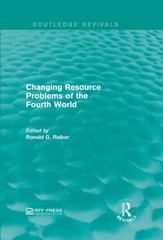question:
5. (a) The Budget is a statement of the Government's fiscal policy. The Irish Government, in its National Recovery Plan 2011-2014 committed to reducing the General Government Deficit to under 3% of GDP by 2014. Explain the underlined term. (ii) State and explain four possible economic effects on the Irish economy of the government's plan to significantly reduce the deficit over the next four years. 30) (b) It has been suggested that in order to reduce the National Debt the government should privatise state owned companies in the coming years. Explain the term 'privatisation'. (ii) Outline four economic arguments in favour of privatisation OR outline four economic arguments against privatisation. (25) (c) "The number of staff in the Irish public sector grew by 15.5% from 2001 to 2008, according to OECD statistics'. (Report on the Sources of Ireland's Banking Crisis, 2010) Discuss four measures the Minister for Finance could take to reduce the public sector wage bill. (20) [75 marks] 6. (a) Money is usually defined by reference to the functions it performs. Outline four functions of money. Explain the term "Monetary Policy". (iii) Explain a central bank's function as 'lender of last resort'. (35) (b) Many believe that a lack of supervision ('light-touch regulation') of financial institutions in Ireland contributed significantly to the banking crisis. Discuss the economic reasons why commercial banks in Ireland should be regulated. (20) (c) It is being suggested that the ECB will increase interest rates in the 2011/2012 period. Explain the economic effects of rising interest rates on the Irish economy. (20) [75 marks]3. (a) (i) Define the term Marginal Revenue Productivity (MRP) of a factor of production. (ii) State and explain two factors that can influence MRP. (iii) Outline two difficulties that may arise in measuring MRP. (25) (b) "Capital Investment has been an important driver of economic advancement in Ireland over the past ten years, providing the capacity and scope for growth'. (The National Recovery Plan 201 1 - 2014) (1) State and explain three reasons why investment is important for the Irish economy. (ii) Describe three factors that currently influence the level of investment in the Irish economy. (30) (c) Advise the Minister for Transport on two possible economic advantages and two possible economic disadvantages of investing in public transport, rather than investing in the construction of new roads. 20) [75 marks] 4. The table below shows the short run production costs for a small firm producing and selling kitchen furniture. Number of units Fixed Costs Variable Costs Total Costs of output E E E 400 600 1,000 400 1,200 1,600 400 1,850 2,250 400 2,900 3,300 400 4,100 4,500 (a) (i) Using the information in the table above calculate the following: The marginal cost of producing the 4" unit. . The average cost of producing 5 units. The profit earned by the firm selling 5 units of output at E1,200 per unit. (Show your workings.) (ii) Using the information in the table above, draw the firm's short run average cost (AC) curve. Explain the reasons for its shape. (30) (b) "The cost of doing business in Ireland is falling. However, some costs continue to increase or remain relatively high'. (National Competitiveness Council Report, 2010) (i) Discuss the economic advantages of falling costs of production for the Irish economy. (ii) Outline possible restrictions on the growth of businesses in the Irish economy at present. (30) (c) The British Petroleum (BP) oil spill in the Gulf of Mexico in 2010 is estimated to have cost a total of $40 bn. Identify two costs for BP and two costs to society associated with this oil spill. (15) 175 marks]1. (a) (i) Define the economic terms: individual (consumer) demand; market demand. (ii) Explain, with the aid of labelled diagrams, the relationship between individual (consumer) demand and market demand. (20) (b) (i) Distinguish between the economic meanings of a 'movement along a demand curve' and a 'shift in a demand curve' for concert tickets. Illustrate your answer using diagrams. (ii) State and explain two factors that would cause a shift in a demand curve for concert tickets. In each case explain how the factor affects the demand curve. (30) (c) The Law of Diminishing Marginal Utility states that as more of a product is consumed, eventually each additional unit of the good provides less additional utility (marginal utility). (i) Explain two assumptions underlying the Law of Diminishing Marginal Utility. A consumer in equilibrium buys 6 health bars at 60.80 each and 9 cartons of juice at 61.50 each. The marginal utility of the 6" health bar is 40 utils. (ii) Using the Equi-Marginal Principle of Consumer Behaviour calculate the marginal utility of the ninth carton of juice. (Show all your workings.) (25) [75 marks] 2. (a) Some Telecoms' analysts believe the main mobile operators in Ireland - Vodafone, 02, Meteor and 3 - control an oligopoly and have little reason to make the market really competitive. (The Irish Times, November, 2010) (i) Outline three key features of an oligopolistic market. Firms in an oligopolistic market may have objectives other than profit maximisation. (ii) Outline two objectives firms in oligopoly may have, other than achieving the maximum level of profits. (25) (b) Using one clearly labelled diagram: (i) Explain the shape of the "kinked' demand curve facing a firm in oligopoly. (ii) Explain the long run equilibrium position of this firm. (25) (c) It is suggested that consumers prefer price competition in the market place, yet there are benefits for consumers arising from non-price competition. (i) Explain two reasons why consumers may prefer price competition. (ii) Describe two benefits to consumers of non-price competition. (25) [75 marks]









